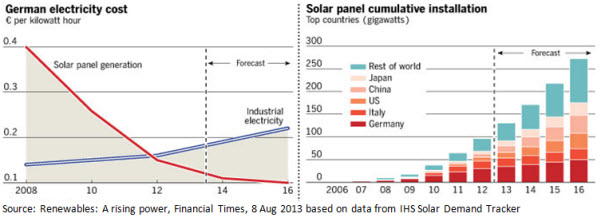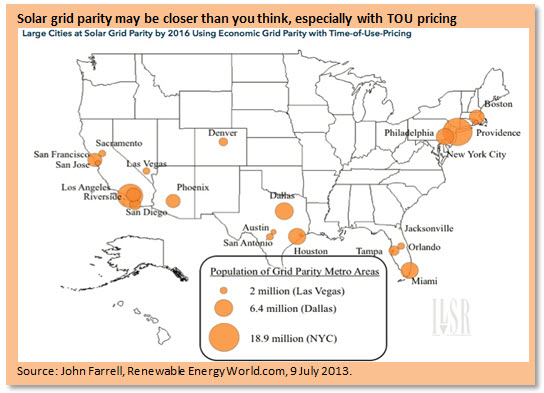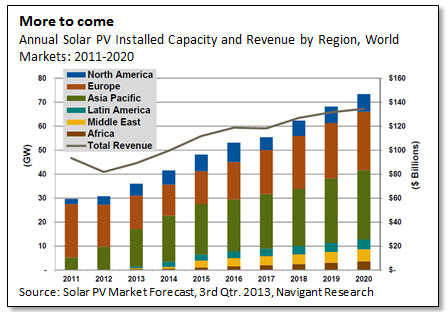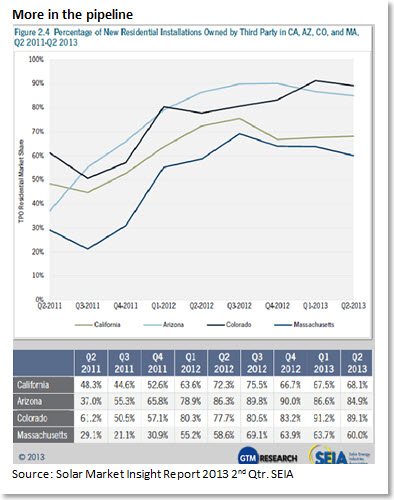Future rather different than the past
This is a sample article from the October 2013 issue of EEnergy Informer.
By sheer coincidence, several articles in this month’s newsletter reinforce the notion that the electricity supply industry’s (ESI) traditional business model may be gradually undermined by forces that are beyond its immediate control. As we see it, three fundamental drivers are at play:
- First, electricity demand growth will be tepid if not naught in most mature economies. Consumers won’t be using as much since buildings and appliances become more efficient over time. Moreover, as retail tariffs rise, energy efficiency investments become even more cost-effective;
- Second, the industry’s centralized power generation paradigm is not as compelling as it used to be. In the coming years, more consumers will have the means to generate most of what they need at prices that continue to fall; and
- Third – this is currently the missing link — is the means of balancing decentralized self-generation with consumption. The “grid” currently acts as a giant yet invisible battery, absorbing the excess generation while feeding consumers when the sun goes down, the fuel-cell unit fails or whatever.
Looking beyond 2020, certainly by 2030, some experts believe consumers may be in a position where they can cut the cord as many have already done with their telephone landlines. The great majority, however, will operate in a semi-independent mode — as grid-assisted or grid-parallel customers — so long as the benefits of being connected to the grid exceed the costs.

The grid will certainly not go away but its function is likely to be fundamentally different than it is today. By the same token, high voltage transmission lines will remain critical, especially in integrating growing amounts of renewable generation while enabling system operators to balance supply and demand. Supply, of course, will no longer be dominated by central thermal plants. Their role will increasingly shift to one of backing up intermittent renewables and fluctuations in decentralized self-generation.
Outlandish? Apparently not. Speaking to Greentech Media at the National Clean Energy Summit in Las Vegas in late August 2013, Jon Wellinghoff, the outgoing chairman of the Federal Energy Regulatory Commission (FERC), predicted that solar energy will eventually “overtake everything,” because its costs keep on falling. Add storage, and it is pretty much “game over” for traditional forms of power generation.
Perhaps Wellinghoff did not mean everything he said, or Greentch Media did not pick up the nuances and caveats that usually accompany such statements. Yet, Wellingoff’s assessment may prove spot on, and certainly consistent with the views of many other futurists.

Wellinghoff is of the opinion that in the next 2-3 years, the US will double its cumulative capacity of distributed solar. The reason is that, as recently documented by the Lawrence Berkeley National Laboratory (July 2013 report), the cost of solar is expected to drop from $4-5/W today to $1-2/W, making it cost-competitive in high tariff, sunny regions of the country.
Wellinghoff is convinced that at present growth rate, “solar will overtake wind in about 10 years,” he said, adding, “Everybody’s roof is out there. Once it is more cost-effective to build solar with storage than to build a combustion turbine or wind for power at night, … (it) is ‘game over.’ ”

In prepared remarks at the same conference, Wellinghof said, “Our markets were made up for a very centralized system, very large plants and plants that were distant from loads. We’re moving to a much more distributed system that also has consumers participating as resources with their load. FERC’s primary role is to ensure that all those resources can get a fair opportunity to participate and get compensated.”
“We’re not picking winners and losers,” he said. “We’re letting the market make those choices but those choices have to be made in a fair and open market. We have to help consumers through that transition; it’s going to be bumpy because we have a traditional utility model that is trying to fit with this new transition and it has implications for rate designs, costs and business models.”

Addressing the brewing controversy about customer self-generation in the context of prevailing net energy metering (NEM) laws, Wellinghoff said that utility tariffs have to “fully recognize the costs and benefits of distributed resources.”
Retail tariffs, of course, are not something FERC can influence – that is determined by state level regulators. Yet Wellinghoff could not resist observing that future tariffs may include “higher fixed costs,” a feature favored by most utilities.
He also noted that there is “value” in distributed solar that can be captured and realized by the distribution utility — pointing out that this value has “not been analyzed, quantified, and monetized.”

